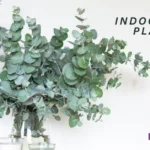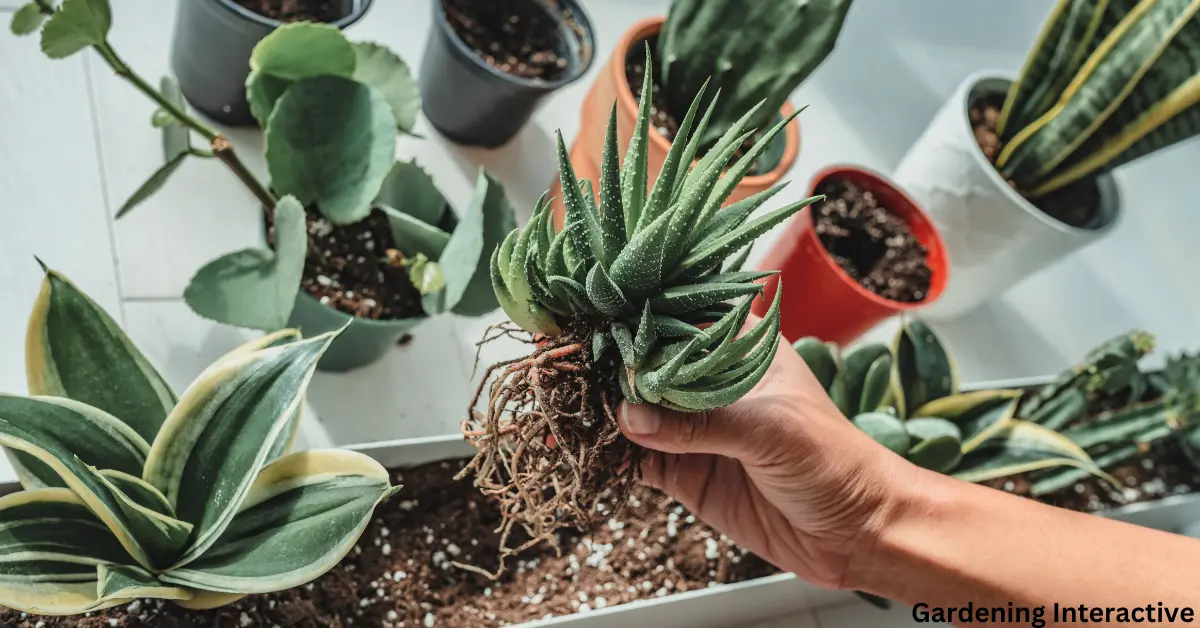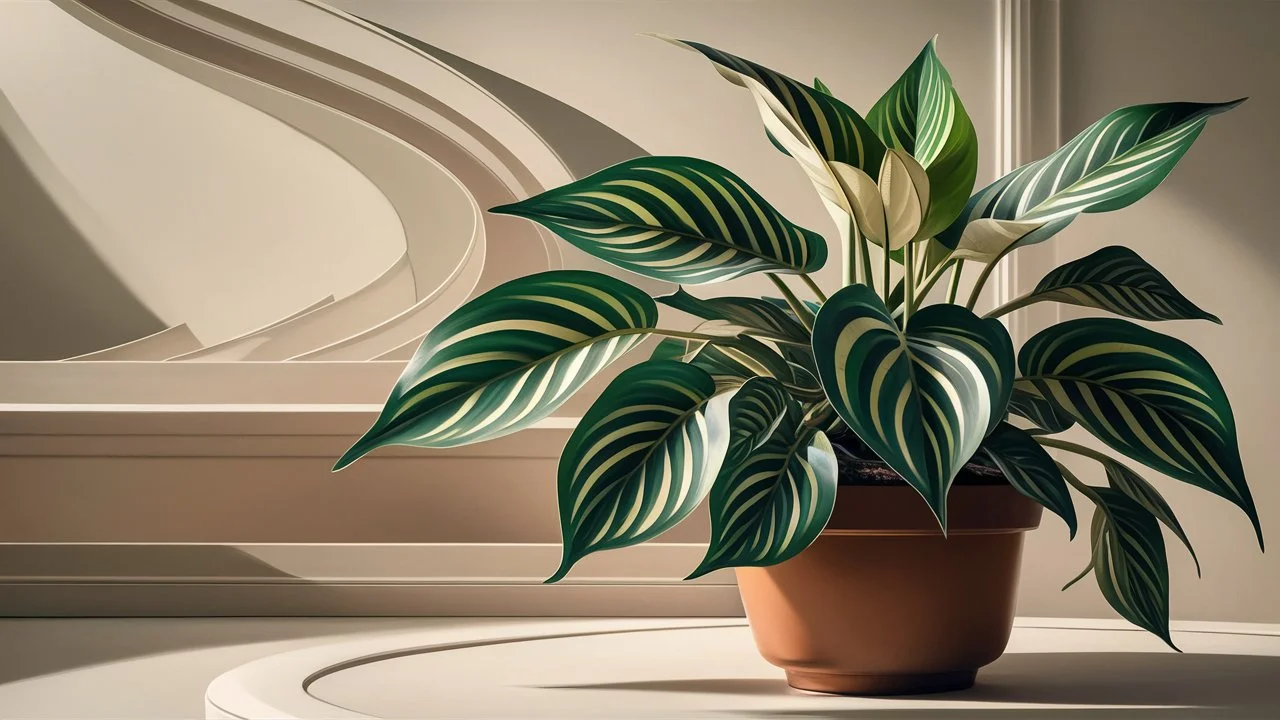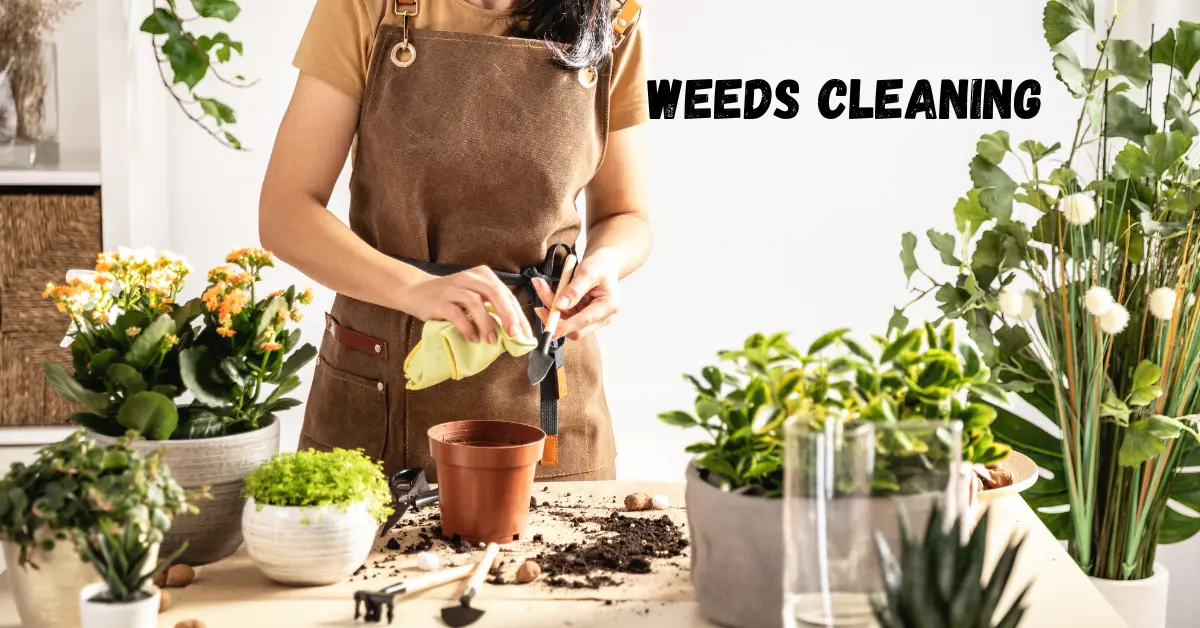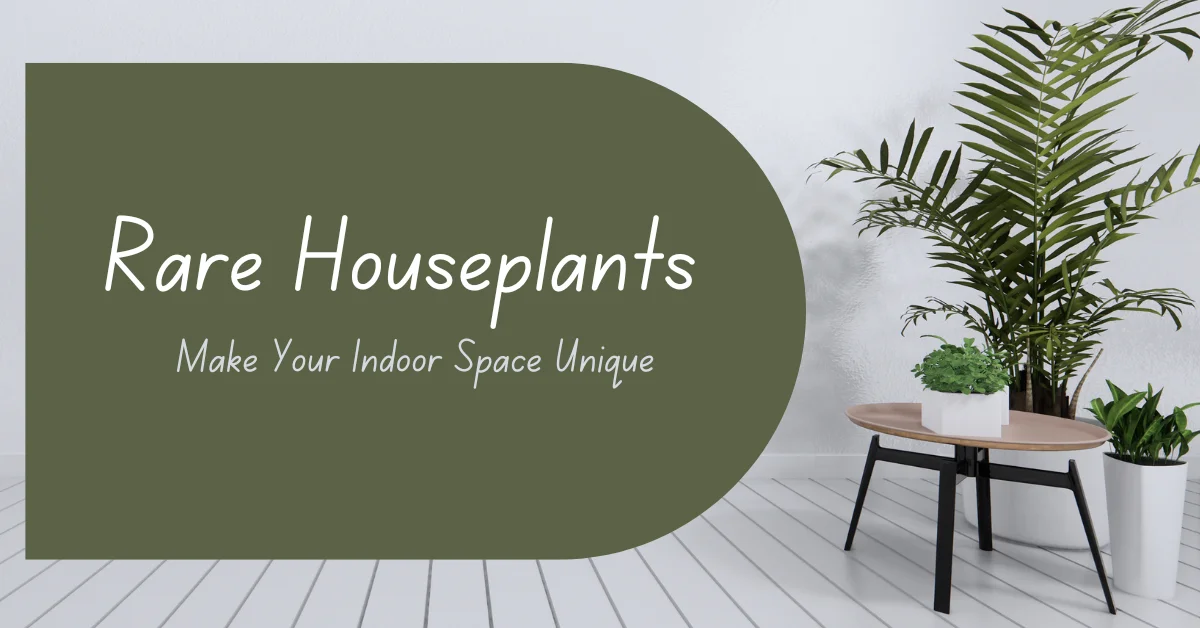
11 Rare House plants To Decor Indoor Space
- Mitford Rakib
- March 30, 2024
- Featured, Plant decor, Plants
- 0 Comments
Rare House plants: Close to The Most Unique Plants
Intro:
Discover the fascinating world of rare house plants, where every leaf has a story to tell about its rarity and uniqueness. These botanical jewels are living artworks that can turn any interior space into a verdant sanctuary. They are more than just beautiful plants. We’ll talk about the allure of uncommon houseplants in this post and present you to 11 remarkable species, each with unique characteristics rare house plants, maintenance needs, and origins.
1. Philodendron:
The heart leaf philodendron, often known as the sweetheart plant or vine (Philodendron Hederaceum). We think it’s lovely, affordable, and really simple to cultivate, so it’s pretty much perfect. With its lovely heart-shaped leaves and graceful, vine-like structure, this philodendron thrives in most interior settings. It’s actually more tolerant of low indoor humidity than a lot of other houseplants that are tropical. Even better, with proper care, heart leaf philodendrons can live for many years. Leaves of the heart leaf philodendron are glossy green.

- Unique Features: Heart-shaped leaves with vibrant green hues.
- Care Requirements: Indirect light, well-draining soil, and regular watering.
- Sunlight Requirements: Moderate to bright, indirect light.
- Advantages: Air-purifying qualities, making it an ideal choice for indoor spaces.
- Origin: Native to the rainforests of South America.
2. Alocasia Frydek Variegata:
The Alocasia Frydek Variegata is an exquisite and uncommon indoor plant. It features whites, grays, and deep, rich greens. Featuring silky, arrow-shaped, heart-shaped leaves with white venation, as well as splash and sectoral variegation. The amount of light your plant receives determines how long its petioles will grow. Light variation must be maintained. one of the most wanted rare house plants.
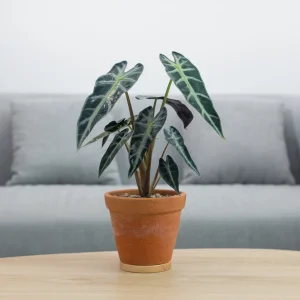
- Unique Features: Variegated foliage with striking green and white patterns.
- Care Requirements: Bright, indirect light, well-draining soil, and high humidity.
- Sunlight Requirements: Thrives in bright, indirect light.
- Advantages: Adds a touch of elegance to any indoor space.
- Origin: Indigenous to Southeast Asia.
3. Corkscrew Albuca:
Known by another name, Corkscrew Albuca, ‘Frizzle Sizzle’ is characterized by small stems with tightly coiled, a rare house plants, thick leaves that emerge from an underground bulb. In April, fragrant yellow blossoms adorn flower spikes, with 10–20 blooms per spike. The aroma of the blooms is pleasant and has an aroma of vanilla and sweetness.
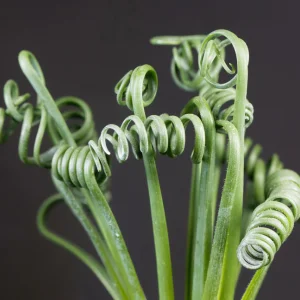
- Unique Features: Spiral, corkscrew-shaped leaves.
- Care Requirements: Well-draining soil, occasional watering, and ample sunlight.
- Sunlight Requirements: Requires full sunlight.
- Advantages: Unique visual appeal and easy to care for.
- Origin: Native to South Africa.
Read More
4. Anthurium Veitchii:
Anthurium Veitchii, pronounced VEET-chee-eye, is a remarkably beautiful plant that is native to Colombia and is frequently referred to as the “King Anthurium.” One of the biggest epiphytic anthuriums, it grows on trees rather than on the ground, and under ideal circumstances, its leaves can reach a length of four to six feet. The species name Veitchii honors John Veitch, a rare house plants, a Scottish horticulturist who brought many foreign species to Europe.
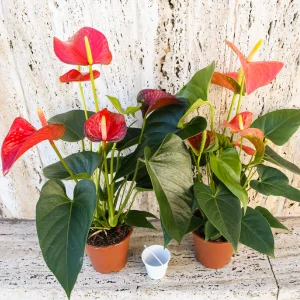
- Unique Features: Velvety leaves with distinctive, elongated veins.
- Care Requirements: Bright, indirect light, well-aerated soil, and high humidity.
- Sunlight Requirements: Prefers filtered sunlight.
- Advantages: Stunning foliage and air-purifying properties.
- Origin: Originates from the rainforests of Colombia.
5. Philodendron Gloriosum:
The plant Philodendron Gloriosum is a terrestrial member of the Araceae family. It belongs to the genus Philodendron and is a creeping plant with heart-shaped, velvety, green leaves with brilliant white veins. Crawling refers to slinking along the earth. The stem of the plant grows parallel to the surface. Philodendrons can grow as creepers or climbers. It’s creepy this one.

- Unique Features: Large, heart-shaped leaves with velvety texture and silver veins.
- Care Requirements: Indirect light, well-draining soil, and consistent moisture.
- Sunlight Requirements: Thrives in bright, indirect light.
- Advantages: A striking centerpiece for any indoor garden.
- Origin: Indigenous to the rainforests of Central and South America.
6. Monstera sport:
Any abrupt, natural change that leads a plant to differ noticeably from its related relatives is referred to as a sport. The database aims to demonstrate the range and diversity of mutations and behaviors that are being found in the Monstera genus.
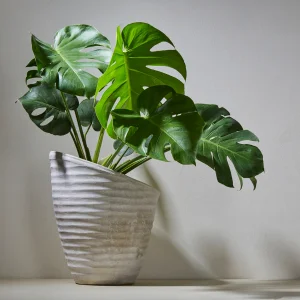
- Unique Features: Variegated leaves with unique patterns and shapes.
- Care Requirements: Bright, indirect light, well-draining soil, and occasional pruning.
- Sunlight Requirements: Prefers filtered sunlight.
- Advantages: Adds a touch of whimsy and creativity to your indoor space.
- Origin: Native to the rainforests of Central and South America.
7. Variegated Syngonium:
The gorgeous houseplant known as “Arrowhead Vine,” or variegated Syngonium Podophyllum, is admired for its lovely variegated leaves and elegant hanging vines. By proper maintenance and care this plant will be focusing part of your indoor houseplants.
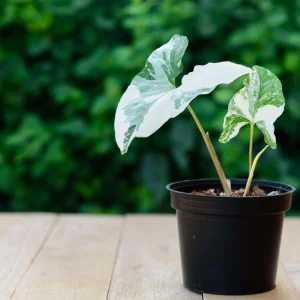
- Unique Features: Variegated, arrow-shaped leaves with beautiful patterns.
- Care Requirements: Indirect light, well-draining soil, and regular watering.
- Sunlight Requirements: Thrives in bright, indirect light.
- Advantages: Easy to care for and adaptable to different environments.
- Origin: Indigenous to Latin America.
8. Monstera obliqua:
The Monstera Obliqua is certainly one among the rarest, most costly, and desired houseplants available, therefore it’s not for the timid. Since a single, unrooted cutting of this rare Monstera can be quite expensive, especially if it is mature and extensively fenestrated, dedicated collectors are usually the only ones who grow it. This tropical plant requires a lot of care and is not only pricey but also slow-growing.
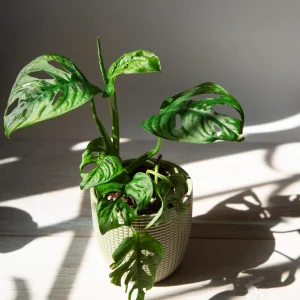
- Unique Features: Elongated, fenestrated leaves with intricate patterns.
- Care Requirements: Indirect light, well-aerated soil, and occasional misting.
- Sunlight Requirements: Prefers bright, indirect light.
- Advantages: A graceful and iconic addition to your indoor garden.
- Origin: Native to the rainforests of Central and South America.
9. Banana Shrub:
This evergreen shrub has the toughness and sweetness of a traditional Southern lady. Its flowers are quite fragrant, and maintaining the growth of the plant is quite simple. Considered by gardeners as a little version of a Southern magnolia, with blossoms that smell more like bananas than lemons.

- Unique Features: Banana-scented flowers and glossy green foliage.
- Care Requirements: Well-draining soil, regular watering, and occasional pruning.
- Sunlight Requirements: Thrives in full to partial sunlight.
- Advantages: Fragrant blooms and a delightful tropical feel.
- Origin: Originates from Southeast Asia.
10. Calathea ornata:
With pink stripes on its enormous green leaves, the Calathea Ornata, commonly known as the Calathea Pinstripe or Pinstripe plant, is a stunning plant. It’s a lovely plant, but occasionally it may be finicky and challenging to maintain. Everyone has encountered difficulties in maintaining the health, let alone the life, of a Calathea. We’ll therefore explore what you can do with this guide to maintain the health of these incredible, yet stubborn, tropical plants.
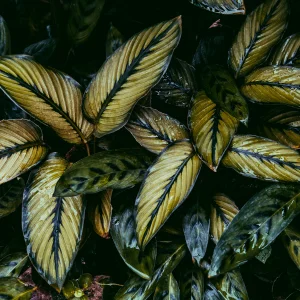
- Unique Features: Pink-striped, lance-shaped leaves.
- Care Requirements: Indirect light, well-draining soil, and consistent moisture.
- Sunlight Requirements: Prefers bright, indirect light.
- Advantages: Adds a touch of elegance and color to your indoor space.
- Origin: Indigenous to the Brazilian rainforests.
11. Desert Rose:
The desert rose bears resemblance to a bonsai due to its glossy, dark-green leaves and thick, bruising truck, which stores water during dry spells. Its spectacular trumpet-shaped flowers, which come in festive colors of pink, white, purple, and red, are what really make it appealing. Bicolor variants, kinds with double flowers, and varieties with variegated leaves are frequently found if you look around.

- Unique Features: Succulent with striking, rose-shaped flowers.
- Care Requirements: Well-draining soil, infrequent watering, and ample sunlight.
- Sunlight Requirements: Requires full sunlight.
- Advantages: Drought-tolerant and visually stunning blooms.
- Origin: Native to the arid regions of Africa and the Middle East.
Frequently Asked Questions (FAQ) :
Q1: Why should I consider rare houseplants for my indoor space?
Rare houseplants bring a touch of exclusivity and uniqueness to your indoor garden. They are living artworks, each with distinct features, making them conversation starters and enhancing the overall aesthetic of your space.
Q2: What makes these ten rare houseplants special?
Each of the ten rare houseplants mentioned in the blog post has unique characteristics, from variegated foliage to spiral-shaped leaves. Their beauty, combined with diverse care requirements, allows plant enthusiasts to explore and expand their collection with captivating varieties.
Q3: Can I grow these rare houseplants indoors?
Yes, all the mentioned rare houseplants are suitable for indoor cultivation. The provided care requirements, including light conditions, soil preferences, and watering needs, will help you create an optimal environment for their growth.
Q4: Where can I buy these rare houseplants?
Reputable nurseries, online plant shops, and local botanical events are excellent places to find rare houseplants. It’s crucial to choose sellers known for ethical practices and sustainable sourcing.
Q5: Are these rare houseplants suitable for beginners?
While some of the mentioned rare houseplants may have specific care requirements, many are adaptable and suitable for enthusiasts with varying levels of experience. Beginners can start with varieties like Philodendron, ZZ Raven, or Snake Plant, which are relatively low-maintenance.

